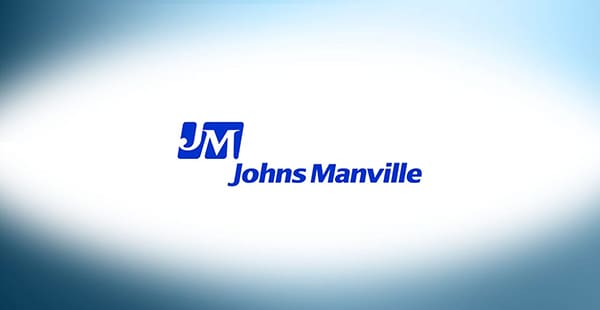Johns-Manville History of Asbestos Use
The Johns-Manville company has been around for over 150 years. For nearly as long, the company made and sold asbestos products. Experts believe it was the largest manufacturer of asbestos products and the largest supplier of raw asbestos in the United States from the 1920s to the 1970s.
The company became known as Johns-Manville in 1901 after a merger between two companies. One, called H.W. Johns Manufacturing Company, made asbestos textiles, roofing and insulation. The other was called Manville Covering Company.
The new Johns-Manville mined and sold raw asbestos. It also made and supplied asbestos materials to companies and the U.S. government.
From the 1920s to the 1970s, Johns-Manville continued to grow its asbestos product offerings. New asbestos products included asbestos cement, brake linings, sheet packaging, adhesives, gaskets, corrugated paper and other materials. Because they were exposed to asbestos, employees at Johns-Manville began developing related diseases by the late 1920s.
Yet, during World War I and World War II, the company thrived and continued to grow. Its asbestos products were heavily used in insulation for ships and aircraft.
The dangers of asbestos were known and documented by at least the 1920s. But it wasn’t until the 1960s that a bigger emphasis was placed on the harmful effects of asbestos exposure. At this time, the company’s growth and profits began to decline. Despite this, Johns-Manville continued as an asbestos company until 1985.
Johns-Manville’s continued use of asbestos led to more than 9,000 lawsuits by the early 1980s. The company officially filed for Chapter 11 bankruptcy in 1982 and established two asbestos trust funds for property damages and personal injuries a few years later. Asbestos claims against the company continue today.
Resources for Mesothelioma Patients
Johns-Manville Asbestos Trust Fund
The number of lawsuits against Johns-Manville rose through the 1970s and early 1980s. By this point, the company faced over 9,000 lawsuits, with juries consistently awarding plaintiffs large verdicts.
In 1982, Johns-Manville filed for Chapter 11 bankruptcy to combat the effects of declining profits coupled with the cost of these liabilities.
The company’s asbestos trust fund was confirmed four years later. The bankruptcy court confirmed their reorganization plan and established two trusts:
- The Manville Personal Injury Settlement Trust to pay personal injury claims, initially funded with $2.5 billion
- The Manville Property Damage Settlement Trust to pay claims for property damage from asbestos removal, initially funded with $125 million
The personal injury trust began accepting claims in 1988. Within that first year, those maintaining the trust noted it had settled over 12,600 claims for nearly $500 million. By 1992, more than 190,000 claims had been filed against the trust.
It quickly became clear that the trust was underfunded, and payments stopped twice. Payout percentages have been lowered accordingly, and the trust has been able to continue offering asbestos victims an opportunity to seek mesothelioma compensation for the company’s wrongdoings.
Most Recent Information From the Johns-Manville Asbestos Trust
The trust’s year-end 2024 report revealed, as of December 31, 2024:
- Total assets of the Johns-Manville trust were approximately $620 million
- The Johns-Manville trust paid out approximately $50 million to injured claimants in 2024
- Over 1 million Johns Manville claims have been settled since the trust was established
- Payments are made on a pro rata basis equal to a percentage of the liquidated value of the claim to ensure fairness among all claimants
- Claim processing is handled by Claims Resolution Management Corporation (CRMC)
Current Johns-Manville Asbestos Trust Payment Percentage
The current payment percentage is 5.1% for the Johns-Manville Trust, which was last updated in February of 2021. At a payment percentage of 5.1%, the current payout on a Johns-Manville Expedited Review claim for mesothelioma is $17,850.
Determining Review Process for a Manville Personal Injury Settlement Trust Claim
There are several factors to consider when determining how to file a Johns-Manville (JM) claim. An asbestos attorney will carefully evaluate and review the client’s exposure details, diagnosis and personal information to determine the best way to file a claim so that the client receives the maximum compensation possible for their Johns-Manville claim. Based on a sampling of Johns-Manville claims filed between 2022 and 2024, approximately 95% percent of Johns-Manville claims were filed using the Expedited Review (ER) process. Around 5% of Johns-Manville claims were filed using the Individual Review (IR) process. An individual review considers additional unique factors that could result in a higher claim payout amount.
- Expedited Review Process: If filing a Johns-Manville claim based on the ER process, the claim must meet the strict exposure and medical requirements that are specified in the Trust Distribution Procedures set by the trust. The Expedited Review ensures a quicker and seamless review process. Claims filed using the Expedited Review process results in a standard scheduled value payment based on the disease severity.
- Individual Review Process: A Johns-Manville claim filed using the IR process will undergo an in-depth evaluation of a claimant’s JM exposure, medical diagnosis and other personal information to determine whether the claim should receive a greater or lower payment than the standard value. This review process by trust administrators may take longer to complete. It’s recommended to file a Johns-Manville claim as IR for a higher payment in cases where claimant is diagnosed at a younger age, has dependents and economic loss to report. Individual Review may be required when a claimant does not meet the exposure or medical criteria, has secondary exposure or for certain diagnoses such as lung cancer in a smoker.
If you developed an asbestos disease after using Johns-Manville’s products, you may be able to get compensation. A mesothelioma lawyer can explain legal options, including trust fund claims and lawsuits. Lawyers at mesothelioma law firms have decades of experience securing compensation for victims of asbestos exposure.
Johns-Manville Asbestos Products
Johns-Manville has been recognized as one of the nation’s leading manufacturers and distributors of both raw asbestos and asbestos-containing goods. For decades, the company focused on a wide array of asbestos materials, largely within the construction industry. They also expanded into automotive parts, producing products like clutch linings, brake blocks and brake linings. Common Johns-Manville asbestos products include:
- Adhesives
- Asbestos cement sheets
- Asbestos felt
- Asbestos shingles
- Asbestos textiles
- Automotive parts
- Cement (transite)
- Construction materials
- Fireproofing materials
- Friction materials
- Insulation
- Paper
- Pipe coverings
- Roofing products
You can find some specific asbestos products made by Johns-Manville in the expandable table below.
Johns-Manville and Occupational Exposure
Workers across the country faced the risk of occupational asbestos exposure from Johns-Manville products and operations. Affected employees included construction workers, miners and factory workers. These workers may have handled asbestos insulation and construction materials, as well as raw asbestos.
At its peak asbestos use, reports estimate the company had at least 3,500 employees. Workers for other companies and in many industries also faced exposure. Johns-Manville products were used in countless buildings, homes, schools, ships and more.
Additionally, homeowners, vehicle owners and others may be at risk for exposure when making repairs or renovations. Families of workers and consumers also faced an increased risk of asbestos-related diseases, such as lung cancer and mesothelioma.
Any asbestos exposure may result in an individual developing an asbestos-related illness such as mesothelioma. Some occupations impacted by Johns-Manville’s asbestos use include:
- Asbestos miners
- Boiler workers and inspectors
- Brake manufacturers and repairers
- Brick masons
- Carpenters
- Construction workers
- Electricians
- Factory workers
- Furnace installers and repairers
- HVAC installers and repairers
- Industrial plant workers
- Insulators
- Machine operators
- Mechanics
- Military veterans
- Mine workers
- Pipefitters
- Plasterers
- Plumbers
- Railroad engineers and workers
- Sheet metal workers
- Shipyard workers
- Steamfitters
- Steel workers
- Textile mill workers
- Tile installers
- Welders
The Johns-Manville trust fund lists many of these occupations at “heavy exposure” risk levels. These include insulators, plumbers, railroad engineers and brakemen, shipyard workers and welders or other metal workers.
According to the trust, shipyard workers were particularly at risk of asbestos exposure and related illnesses. Building, repairing, maintaining and operating ships exposed millions of shipyard workers worldwide to asbestos.
Asbestos Lawsuits Against Johns-Manville
Johns-Manville employees began to complain about lung diseases and disability as a result of asbestos exposure on the job as early as 1929. Allegedly, Johns-Manville handled these early claims in private and settled in secrecy. However, the number of asbestos claims grew very quickly.
Sources stated Johns-Manville tried to discredit many of these claims. They argued that employees were also negligent because they knew or should have known of the dangers of asbestos. The corporation further argued that, until 1964, the company wasn’t legally required to have warning labels about asbestos on their products.
Despite such efforts, new asbestos lawsuits continued to rise, reaching 159 in 1976 and jumping to 792 within two years. By 1979, the company was a defendant or co-defendant in more than 1,500 lawsuits.
Another notable case filed against Johns-Manville reached a decision in 1985. The plaintiff was a boilermaker who developed lung cancer after beginning work in the industry in 1939. He explained that he had worked in close proximity with insulators. He was exposed to so much asbestos during his shifts that he likened it to having a barrel of flour dumped on him.
Johns-Manville supplied upwards of 90% of the insulation materials on these jobsites. As a result of his prolonged exposure, the man developed asbestos lung cancer and his health quickly declined. The jury awarded him and his wife $2.3 million.
The verdict was upheld on appeal, citing the company’s negligence in exposing employees and clear knowledge of the dangers of asbestos.
In 2014, the families of 11 residents of Manville, New Jersey, were cumulatively awarded $90.5 million. The families sued two foreign companies that had sold asbestos to Johns-Manville. Major manufacturing plants operated in the area, exposing numerous workers and residents to asbestos. The 11 New Jersey residents all died of asbestos-related cancer and diseases. Many were workers at the plants, but some were also victims of secondhand exposure from family members employed at Johns-Manville’s facilities.
Successful Settlements Against Johns-Manville
Victims of Johns-Manville’s asbestos exposure were able to receive settlements prior to the company going bankrupt. Examples of previous asbestos settlements against Johns-Manville include:
- A 74-year-old pipefitter in Denver, Colorado, named Johns-Manville in their exposure case. They won $2,815,728.
- A 96-year-old Navy worker and chemist in Chicago, Illinois, named Johns-Manville as a source of asbestos exposure. They received $1,609,462.
Common Questions About Johns-Manville
- Does Johns-Manville fiberglass insulation contain asbestos?
Johns-Manville used asbestos to make insulation for much of the 20th century. People should assume the company’s insulation made before the 1980s has asbestos in it. Today, Johns-Manville does not make products with asbestos.
- When did Johns-Manville stop using asbestos?
Johns-Manville fully stopped its asbestos use in 1985. Like many companies, Johns-Manville only stopped using asbestos after public pressure and increased litigation forced its hand. It decreased asbestos use over several years before finally giving it up completely.









